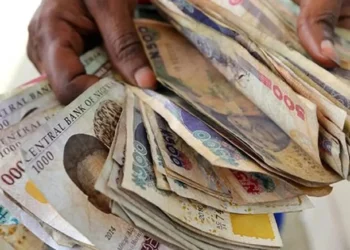Global oil markets were rocked midweek as crude prices plunged to their lowest levels since early 2021, intensifying concerns over the economic fallout for oil-reliant countries like Nigeria. The steep decline comes amid rising tensions between the United States and China, whose escalating tariff war is fueling fears of a global economic slowdown.
As of early Wednesday trading, Brent crude futures had fallen by $2.38, a 3.79% drop, bringing the benchmark to $60.44 per barrel. Similarly, U.S. West Texas Intermediate (WTI) crude slipped by $2.46, or 4.13%, to settle at $57.12 per barrel. Both benchmarks have now recorded five consecutive sessions of losses.
The downturn has been attributed to two major factors: growing concerns over weakening global demand due to trade frictions, and increased supply levels that are raising the risk of an oversupplied market. In particular, the Brent six-month spread narrowed sharply to $0.79 — its lowest level in nearly five months — signaling bearish sentiment and expectations of a surplus.
The immediate trigger for this downward spiral was the U.S. government’s decision to impose a hefty 104% tariff on Chinese imports. The new trade measures, which include an additional 50% penalty on top of existing tariffs, took effect on Wednesday and were introduced after China failed to scale back its retaliatory actions. Beijing responded by condemning the U.S. policy as economic coercion and vowed further countermeasures.
Industry analysts warn that if tensions persist, the anticipated increase in Chinese crude demand — projected to range between 50,000 and 100,000 barrels per day — could falter, putting further pressure on prices. “The chances of a quick resolution between the two largest economies are fading fast, and that spells trouble for oil demand worldwide,” said Ye Lin, Vice President of Oil Commodity Markets at Rystad Energy.
Compounding the situation is a recent decision by OPEC+ to boost output by 411,000 barrels per day starting in May, a move that could aggravate supply concerns at a time of weakening consumption.
Goldman Sachs now forecasts Brent prices could slide to $62 by year-end and fall further to $55 by the end of 2026, with WTI expected to follow a similar trend.
Nigeria Faces Heightened Fiscal Risk
For Nigeria, where oil revenues account for about 80% of government income and 95% of foreign exchange earnings, the price slump poses a serious challenge. The country’s 2025 budget was benchmarked at $75 per barrel — a level that now looks increasingly optimistic in light of Brent’s slide below $61.
A prolonged downturn in oil prices could widen the fiscal deficit, force increased government borrowing, and apply fresh pressure on the naira in the foreign exchange market. There are also fears that investor interest in Nigeria’s oil sector, particularly high-cost offshore projects, could wane amid weaker price signals.
Still, not all indicators were negative. Data from the American Petroleum Institute revealed a surprise drawdown of 1.1 million barrels in U.S. crude inventories, suggesting that some underlying demand may still support prices in the near term.
As Nigeria monitors the evolving global dynamics, policymakers and market stakeholders will need to weigh their next steps carefully to safeguard economic stability in an increasingly volatile energy landscape.











